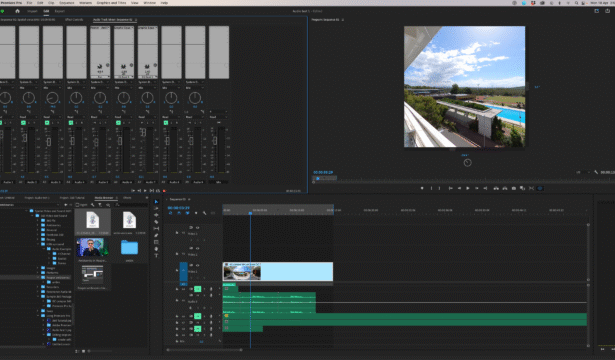In the Spatial Video and Sound course, which is part of the Bachelor of Design at Queensland College of Arts and Design, Griffith University, students create 360 videos and add spatial sound to them using Ambisonic recording and editing processes in Adobe Premiere Pro. This course explored sensory immersion, in the form of spatial video and audio production. Students gained practical skills in the production and presentation of immersive audio-visual content utilising industry professional process with 360 cameras, ambisonic audio production and critical reflective practice.
Four weeks of this course focused specifically on spatial audio recording with Zoom recorders and editing in Adobe Premiere Pro. The class notes for these weeks are below.
Capturing 360 Audio
Sound is an important aspect of any audiovisual medium. Just as the 360 video production process is distinct from normal video production, 360 (ambisonic) sound production also differs from traditional stereo audio production. The process starts with recording. Class Notes
Record and Edit Diagetic Spatial Sound
A diegetic sound is any sound that originates from the world of a video. A very simple way to think about diegetic sound is to think of it as that could make sound in the world of the video. If the camera can ‘hear’ it, it’s diegetic. Class Notes.
Multitrack Spatial Audio
Video audio usually includes a montage of background and foley sounds. The identification, capture and combination of them in a final mix is a critical aspect of the 360 video production process. Class Notes.
Exporting 360 Video with Spatial Audio
Ambisonic audio is a useful format for VR as, once encoded, it can still be manipulated/rotated without having to have access to all the audio source tracks individually. This is great for applications that need to steer the audio render in real time, like watching 360 videos on YouTube using binaural encoding. Class Notes.

